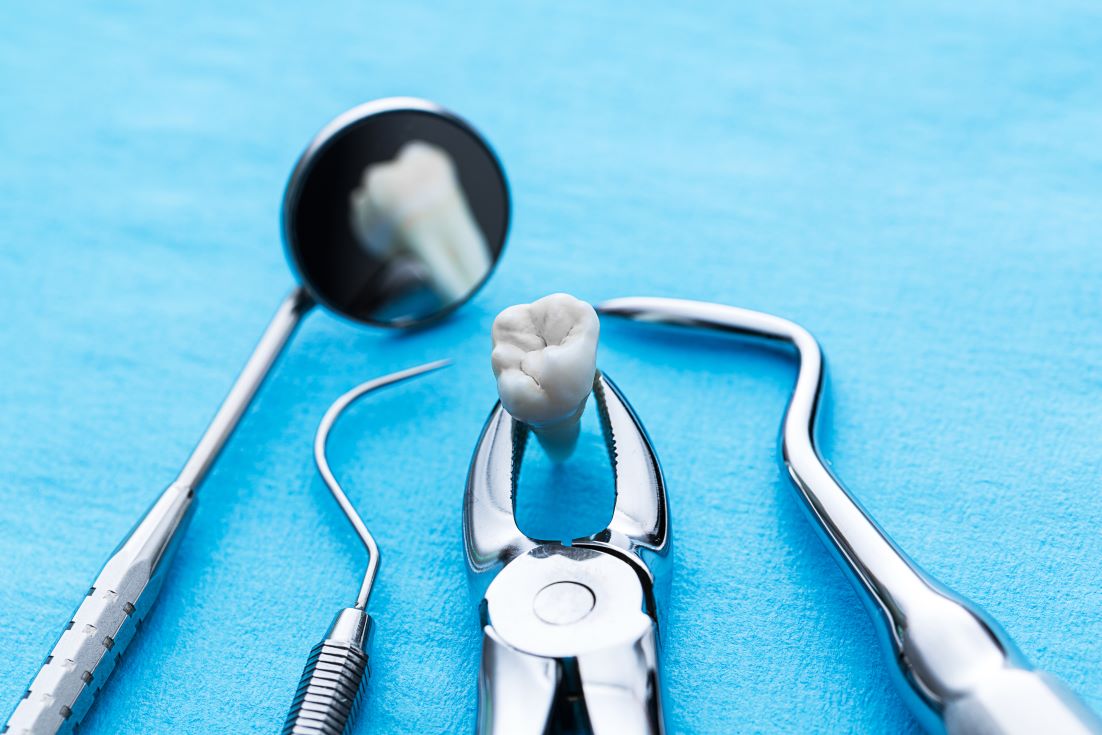
With so many preventive, restorative, and cosmetic dentistry options, tooth extraction is often the last resort for dentists. In many cases, a tooth can undergo root canal therapy, have a crown placed over it, or be restored with dental bonding or veneers. However, there are instances when an extraction is necessary to improve the patient’s oral and overall health.
Five of the most common reasons dentists recommend a tooth extraction include:
- Tooth decay
- Gum disease
- Overcrowding
- Impaction
- Trauma
So, does your tooth actually need to be extracted? Or will some other form of treatment work? Continue reading to learn more.
- Tooth Decay
Dental decay, also known as cavities, occurs when plaque and tartar eat away at the dental enamel. Over time, this creates holes in the tooth and exposes the inner, more sensitive parts of the tooth. This is what causes dental sensitivity and toothaches.
When patients visit the dentist at least twice a year (as recommended by the ADA), dentists catch cavities early on. At this time, the dentist will likely recommend a dental filling to repair and restore the tooth. If a cavity progresses further, the dentist may recommend an inlay, onlay, dental crown, or root canal therapy.
Unfortunately, some patients wait to seek treatment until it’s too late to save the natural tooth. These visits are often emergency dental visits because the pain is so intense. Severe pain paired with swelling and redness typically indicates that the tooth has become infected. To stop the pain and infection, a tooth extraction will likely be necessary.
- Gum Disease
According to the CDC, gum disease is the leading cause of tooth loss. Also known as periodontal disease, this inflammatory condition affects the hard and soft supporting structures in the mouth.
The first and most common stage of gum disease is called gingivitis. The first symptom of gingivitis is usually bleeding gums while brushing and/or flossing. Patients may also experience swollen and irritated gums and persistent bad breath. The good news is that in this stage, the disease is reversible with good oral hygiene and a regular dental cleaning.
Unfortunately, without intervention, the disease will progress and become very destructive to the gums and jawbone. As the bacteria eat away at the gum tissue, the tooth roots become exposed and the bacteria infiltrate the jawbone. The teeth will likely be very loose and almost ready to fall out on their own.
It’s important to seek professional dental care to have the tooth removed in a clean and safe environment by a dentist with a steady hand. The dentist will also be able to treat the periodontal disease and create a plan to restore your mouth back to health.
- Overcrowding
Overcrowding occurs when the jaws aren’t large enough to handle all of a person’s permanent teeth. This causes the teeth to erupt at different angles and overlap one another. Typically, dentists will recommend tooth extraction before braces for patients who want to straighten their teeth. Strategically removing one or two teeth can provide the rest of the teeth the room they need to move into their proper positions.
- Impaction
Another thing that might happen when the jaw is too small is impaction. This means that one or more teeth won’t emerge from the gums, but will grow sideways into the neighboring teeth. Impaction mostly affects the wisdom teeth which is why those teeth are so often removed.
Symptoms of an impacted tooth include swollen gums, pain and discomfort, unexplained headaches, and shifting teeth. Anytime a tooth is impacted, it must be removed to relieve the pain and reduce the risk of infection.
- Trauma
Car crashes, sports injuries, and even something as simple as falling may result in tooth extraction. Any type of trauma on a tooth can cause the tooth to become loose, cracked, or chipped. Whether or not the tooth needs to be removed depends on the extent of the damage.
A tooth that’s damaged all the way through and down to the roots may need to be extracted so that an infection doesn’t develop and spread. However, in some cases, dental bonding or a dental crown can seal the natural tooth, protecting it from bacteria while still keeping the tooth intact.
Find An Experienced, Trustworthy Dentist
The key to a comfortable tooth extraction experience is to find an experienced and trusted dentist. Ask friends and family, read online reviews, and do some digging to find the dentist that best suits your needs. Look for a dentist who uses the latest dental technology and trusted techniques, and one who prioritizes patient comfort.
You’ll find all of that and more at our dental practice. Contact us today to schedule your appointment.

